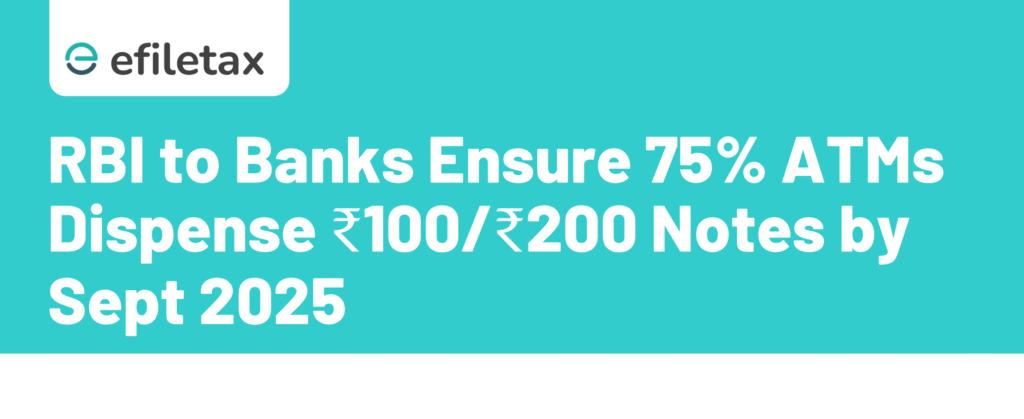
RBI’s New Directive on ₹100, ₹200 Notes What Every Bank and Customer Should Know
In a move to enhance public access to lower denomination currency, the Reserve Bank of India (RBI) has issued a new guideline directing all banks to ensure 75% of their ATMs dispense ₹100 and ₹200 notes by September 30, 2025, and 90% by March 31, 2026.
This decision, backed by RBI’s circular dated 31 May 2025, aims to address public inconvenience caused by the shortage of smaller denominations in ATMs, especially in semi-urban and rural areas.
Why RBI Is Focusing on ₹100 and ₹200 Notes
The RBI noted a continued shortfall in ₹100 and ₹200 note availability in ATMs across India. This has led to cash crunch situations in small-value transactions, with many machines only dispensing ₹500 or ₹2000 notes, which aren’t always practical.
Key reasons behind the move:
- To improve currency distribution balance
- To meet public demand for smaller notes
- To support financial inclusion in rural areas
- To address customer complaints on unavailability of change
What Banks Must Do Now
The RBI has set strict targets and timelines for banks to upgrade their ATMs and recalibrate their cassettes accordingly.
| Action Required | Target Date | Minimum Compliance Level |
|---|---|---|
| ATMs dispensing ₹100/₹200 notes | 30 Sept 2025 | 75% of total ATMs |
| Further upgrade to include more | 31 March 2026 | 90% of total ATMs |
🔹 ATMs include onsite and offsite cash dispensers across urban and rural locations.
RBI’s Compliance Monitoring Framework
To ensure accountability, banks must:
- Submit monthly compliance reports to the RBI
- Undertake physical audits of ATM networks
- Prioritize recalibration of ATMs in underserved and high-footfall areas
- Rectify non-compliant ATMs within prescribed deadlines
Banks failing to meet the deadlines may attract penalties under the RBI Master Circular on ATM operations.
Expert View: “This move will push banks to modernize their ATM infrastructure and genuinely serve the public need for smaller denominations,” says CA Nilesh Shah, banking compliance consultant.
How This Affects the Public
For common users, this move is a major relief. Expect:
- Better availability of change
- Faster transactions at local shops
- Reduced dependency on bank branches for smaller notes
FAQs on RBI’s ATM Note Mandate
Q1. Will all ATMs give only ₹100 and ₹200 notes now?
No, ATMs will continue to offer ₹500 notes too. RBI only mandates inclusion of lower denomination notes in 75–90% of ATMs.
Q2. Is this mandatory for private banks too?
Yes, the mandate applies to all scheduled commercial banks, including private and public sector entities.
Q3. Will there be penalties for non-compliance?
Yes. RBI can impose regulatory actions and penalties under existing guidelines if banks do not comply.
Final Thoughts
RBI’s push for smaller denomination availability is a consumer-centric move aimed at financial inclusion and ease of doing business in cash-heavy sectors. Banks must act swiftly to meet the compliance deadlines.